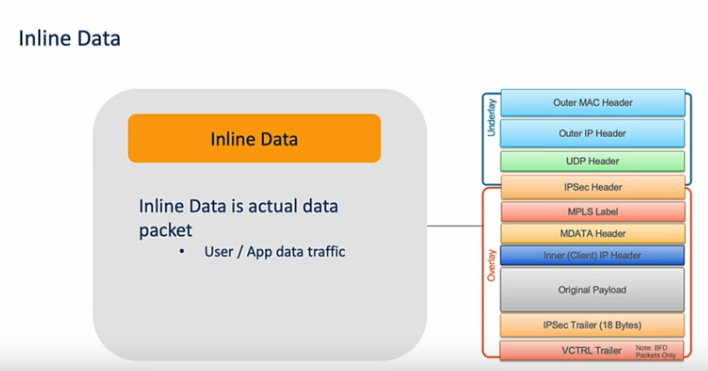In version 20.12, Catalyst SD-WAN created Enhanced Application Aware-Routing. The issue with standard AAR (Application Aware-Routing) is that it uses BFD tunnel performance measurements, this can take from 10minutes – 60minutes for convergance times to detect SLA breaches and failover. If you start configuirng the performance timer then this could create false positives.
AAR is measured based on:
- Loss – The number of BFD echoes that failed to reply
- Latency – How long it takes to recieve the BFD echo and Hello (RTT)
- Jitter – Measuring the delay of the packet arrival times, also measures irregularity of the packet as it is being transmitted and received.
With EAAR, improvements have been made which are the following:

- Performance metrics (Loss/Latency/Jitter) is improved by introducing Inline Data. Inline data is the traffic that is being inspected at the edge of the network. Instead of traffic being routed to a central location for analysis and security checks, Inline data is being inspected and forward/data place decisions is being made at the edge. Loss is being measured with two differences. Loss is being measurements uses Per queue Adaptive-QoS Metrics which includes Per Queue path loss – this means it will be able to differentiate whether it is local loss or loss on the WAN circuit. Latency is RTT with Patented method where we insert metadata for measurements. Wheres Jitter is measured Unidirectional
- Peformance poll-interval has decreased to minimum of 10s, as mentioned above standard AAR is minimum of 10minutes. Therefore should there be a breach of threshold then it will only take a matter of seconds instead of minutes.
- SLA Dampening – Same principle as BGP route dampening. Essentially is the SLA is being breached back and forth instead of re-adding the transport back it will need to stabilise first before being added back. This helps stability and prevents disruptions.
Caveats
EAAR is available on IOS-XE 17.12.1a. If one has EAAR disabled or an older version then it will not work and will default to standard AAR.
If both versions is 17.12.1a but not enabled with EAAR then it will default to AAR.